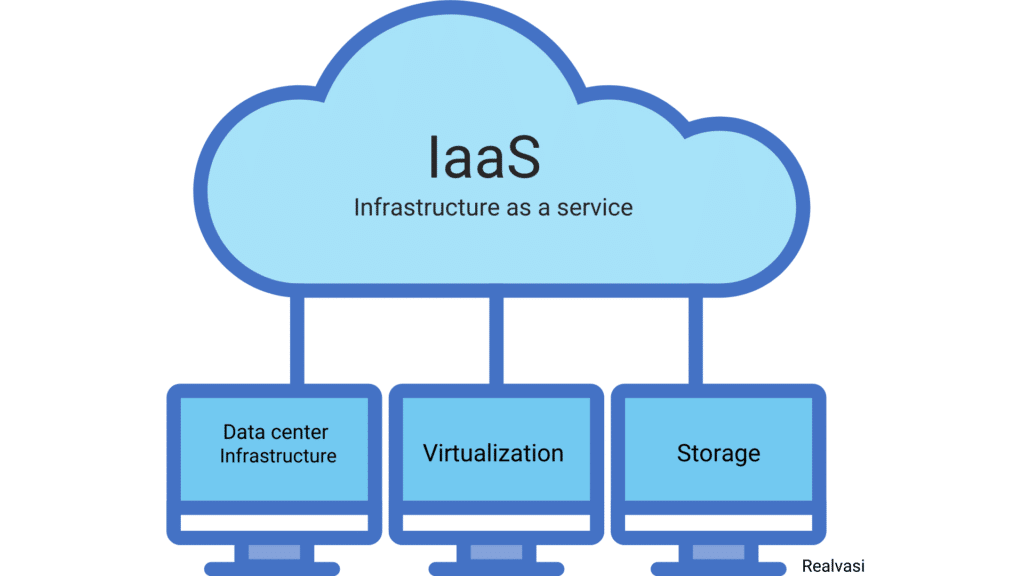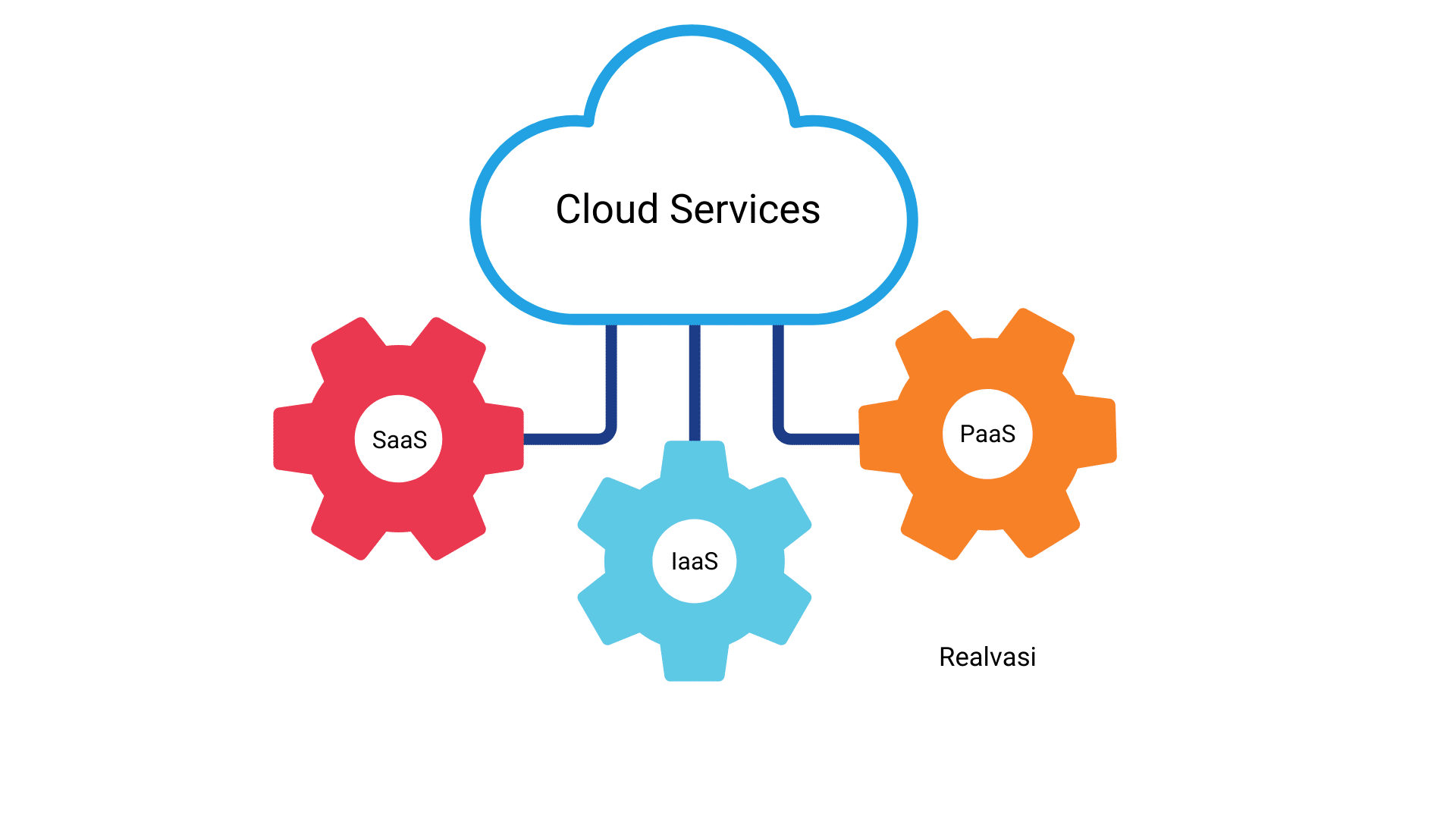What is IaaS Model
Infrastructure as a Service is a cloud computing service model in which a cloud provider manages its infrastructure, such as storage, servers, and network resources, and then makes them available to subscribers outside of the company via the internet as virtual machines.
In this model, the cloud provider internalizes the infrastructure (e.g. Servers, storage, networks, hardware, hypervisors) the company runs, which means that companies do not need the requirements of their local data centres.
Customers can access resources and services via cloud provider services from a wide area network (WAN) such as the Internet and install the rest of the application stack.
In contrast to PaaS and SaaS, new computing models such as containers and server-less IaaS offer less control over resources in the cloud.
IaaS, SaaS, and PaaS are one of several cloud computing models that complement or combine these three models by relying on the model by hosting, managing and offering the operating systems, middleware and other runtimes to cloud users in addition to the underlying infrastructure components.
Key components of Infrastructure-as-a-Service
Key components of Infrastructure-as-a-Service can be used to replace existing development and testing environments, virtual machines, website hosting, storage, backup, networking, servers, operating systems, middleware, data applications and high-performance computers (HPCs).
One such cloud service is this, which makes virtualized computing resources available to companies over the Internet.
This, along with software services and Platform-as-a-Service, is one of the three primary categories of cloud computing services.
A cloud infrastructure service (cloud infrastructure service, also known as infrastructure service is a self-service model for accessing, monitoring and managing remote data centre infrastructures such as data centres (virtualized or bare metal), storage, network and networking services.
It should not be confused with PaaS, a cloud-based offering where a service provider provides its customers with a platform that allows them to develop, operate and manage business applications without building and maintaining the infrastructure that such software development processes require.
IaaS, like other cloud services, provides public Internet access to IT resources in a virtualized environment.
3 Types of Cloud Computing Services
Software as a Service (SaaS),
Platform as a Service (PaaS),
Infrastructure as a Service (IaaS) .
Cloud services like PaaS and SaaS are suited to their target audience’s business demands.
PaaS and Application as a Platform Service are cloud computing service types that enable customers to deploy, instantiate, execute and manage modules which include a computing platform for one or more applications without the complexity of building and maintaining the infrastructure associated with development and deployment of the application (s), enabling developers to create and develop packages such as software packages.
It provider’s range of services is enormous and constantly evolving, so the needs of the company should be weighed and prioritized when selecting a cloud service provider.
Most of the more than 100 cloud computing services such as EC2, RDS and S3 can be used as IaS, but most companies using Amazon Web Services (AWS) select the services they need.
In contrast to conventional IaaS, bare metal services (BMAAs) offer end users not only virtualized computing, networking and storage capabilities, but also direct access to the underlying hardware.
The web delivery approach for cloud application services and software as a service (SaaS) eliminates the requirement to install and run applications on individual PCs.
What is Cloud Computing Infrastructure
Cloud Infrastructure as a Service means that no infrastructure needs to be set up to launch new applications or brand new applications for users using IaaS.
Cloud Computing Infrastructure ( Cloud Computing ) is provided via Infrastructure as a Service , which includes servers, networks, operating systems, storage, and virtualization technologies.
A cloud provider manages its infrastructure, such as storage, servers, and network resources, and makes them available to subscribers throughout the firm as virtual machines accessible via the Internet in the IaaS model.
Cloud provider is responsible for services such as virtualization, networking and storage, but you are able to manage services such as application data, runtime middleware and operating systems.
Customers who utilize IaaS can access resources and services across a wide area network (WAN), such as the Internet, and then use cloud provider services to install the application stack’s remaining components.
It is highly customizable, allowing users to install cloud services that match the organization’s data centers.
Differences Between IaaS , SaaS & PaaS
It is important to understand the difference between IaaS, PaaS and SaaS and the available core cloud models.
cloud services such as IaaS, PaaS and SaaS are tailored to the business needs of their target audience.
Cloud-based solutions offer several significant advantages compared to on-site hardware and software.
What is IaaS
It offers a user base an alternative to local infrastructure, allowing businesses to avoid investing in expensive local resources.

This is one of several cloud computing models that complement or combine IaaS, PaaS, and Saas, PaaS is based on the IaaS model, where the provider hosts, manages and offers operating systems, middleware, and other runtimes for cloud users in addition to underlying infrastructure components.
When you sign up for a cloud service model like SaaS, IaaS, or PaaS, you may take advantage of its many benefits, such as flexibility and efficiency, to help you build your business.
If you need cloud-based software and storage options, a seamless platform allows you to build tailored applications and take complete control of your entire infrastructure without maintaining it, because cloud services do it all for you.
Saas is considered the most popular form of cloud deployment with more than 50% of companies using as-a-service as it allows users to use cloud-based services without having to manage primary infrastructure.
What is SaaS
Software-as-a-Service (also known as Cloud Application Services) eliminates the need for IT staff to download and install applications on individual computers due to its web-based delivery model.
- These solutions are used by variety of businesses of all sizes,
- Email services for businesses such as Gmail (available to all businesses),
- Collaboration tools like Trello,
- CRM software like Salesforce and Zoho,
- Event management software like EventPro and Cvent,
- Enterprise resource planning software like SAP S / 4HANA Cloud ERP.
Many companies use a combination of SaaS and IaaS (Cloud Computing as a Service) models, and many hire developers to develop applications with IaaE.
SaaS Technology is unique to the cloud model in that users do not need to install or download SaaS apps on their devices, but can access them via plug-ins.
Infrastructure as a Service, together with Software as a Service and Platform as a Service, is one of the three primary categories of cloud computing services (PaaS).
What is PaaS
A cloud platform-as-a-service, also known as Platform-as-a-Service, provides the cloud components of certain software for use in applications.
It provides developers with a framework on which to build and create customized applications.
We hope that this fun visual guide will highlight the parallels between the various types of travel and the different types of cloud services to help you understand the difference between IaaS, PaaS, and SaaS.
It is a flexible cloud computing model that provides customers with instant access to computing, storage and networking solutions. Read on to learn more about IAS, the benefits of cloud computing for businesses, the challenges it poses, and examples of what it can do.
Most of the more than 100 cloud services such as EC2, RDS, and S3 use IaaS, but most businesses that use Amazon Web Services (AWS) select the services they need.
PaaS is based on and built on IaaS and SaaS, but both cloud service models have their own differences and advantages.
How IaaS Differs from SaaS
Infrastructure as a Service differs from the SaaS software sales model in that the service provider hosts the customer’s applications and makes them available to the customer via the Internet (e.g.
You can run your website or application using IaaS, for example via the Elastic Compute Cloud or Amazon Web Services.
Most companies use a combination of SaaS and IaaS (Cloud Computing as a Service) models and many developers hire to develop applications that can be used with the service.
These companies can also provide services such as pay-as-you-go storage, networking and virtualisation.
RingCentral cloud telephone system is an example of a PaaS platform-as-a-service, which stands for Software as a Service and offers a complete application managed in the cloud.
For companies, PaaS offers software developers a self-service portal for managing the IT infrastructure and a central IT operating platform that can be installed in addition to the hardware.
It is a type of cloud computing service that provides computing, storage, and network resources on-demand or on a pay-as-you-go basis.
It is a form of cloud computing that provides consumers with basic pay-as-you-go computing, network, and storage resources on-demand over the Internet.
PaaS provides cloud components for specific software applications in the cloud.
Companies Providing IaaS Services
IBM is committed to providing solutions for cloud-native applications and workloads, including IBM Cloud, Kubernetes Services and IBM Functions for serverless applications in addition to IaaS.
IBM Cloud is developed by IBM similar to other cloud service providers and includes IaaS, SaaS, and PaaS services in public, private, and hybrid cloud models.
Provides a self-service interface that includes a web-based user interface and API management tools to provide services such as cloud software and infrastructure services.
Alibaba Cloud offers various products and services in various categories, including resilient computing, storage, CDN, networking, database services, security, monitoring and management, domain and website analysis, data technology, application services, media services, middleware, cloud communications, APPSARA stack and Internet of Things.
If you need cloud-based software and storage options with a seamless platform that allows you to build tailored applications and have complete control over your entire infrastructure without having to maintain it, then this cloud service is for you.
The range of services offered by IaaS providers is enormous and constantly evolving, so the needs of companies should be evaluated and prioritized when selecting a cloud service provider.
Infrastructure as a Service Providers
The three leading providers offer a wide range of computer services, including fast networks, backup, storage, simple FDI, and other helpful options.
Cloud infrastructure providers use virtualization technologies to provide scalable computing resources to their customers such as servers, networks, and storage.
Organizations can operate their own apps and services with PaaS solutions, but data located on third-party-controlled cloud servers pose security risks and concerns.
Amazon Web Services is a safe and secure cloud services platform that enables businesses to grow and scale by providing computing power, database storage, content delivery, and other services.
PaaS is a cloud-based offering that provides a platform for building software components and tools that can be used by developers to create, customize, test and launch applications.
In 2006, Amazon launched Simple Storage Service (S3) and Elastic Compute Cloud (EC2) to pioneer the use of server virtualization and provide IaaS on a pay-as-price model.
This revolutionary trend for businesses and industries opened the door to selecting vendors such as Amazon Web Services (AWS), Microsoft Azure and Google Cloud for flexible cloud infrastructure with advanced computing capacity, network speeds and storage.
Conclusion
The above article is all about Infrastructure as a Service and its Providers, PaaS and SaaS
Note: The information in this article is based solely on information found on the internet and does not come from any private sources.
